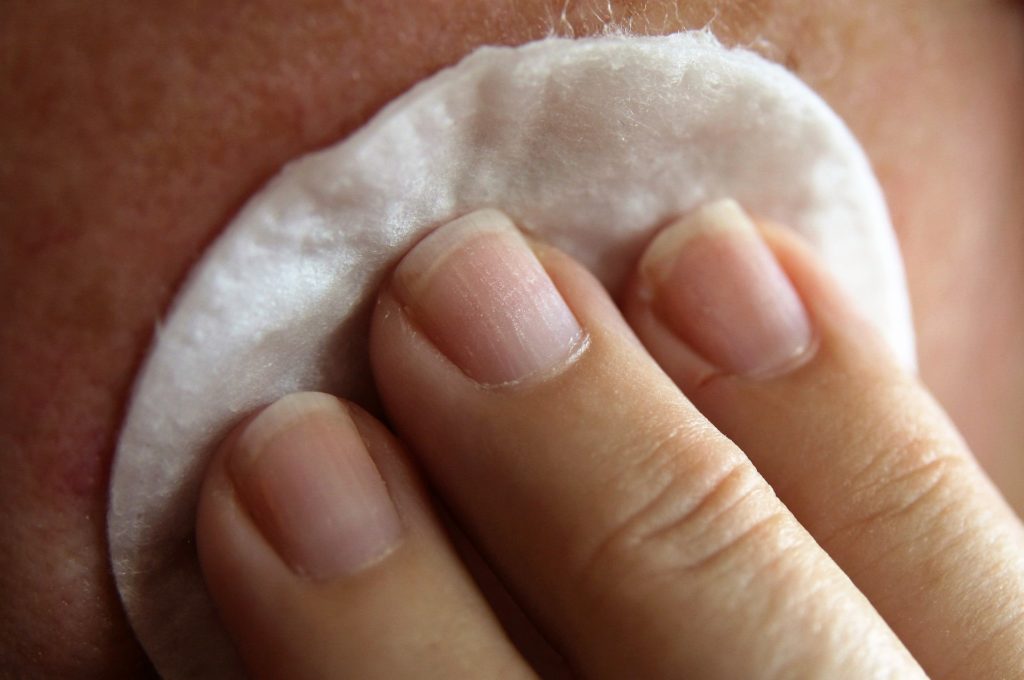
Natural Plant Based Candle Wick
These braided wicks are made with natural fibers of hemp (Cannabis sativa) instead of cotton. Hemp wicks provide for a hotter burning wick and increased rigidity. Used with all types of waxes.
You can find natural hemp wick in Mother Jai’s hand poured Soy Wax candles.

Blended Candles 8oz Jar
Light and enjoy the natural aromas of essential oils. No toxic metals, artificial fragrances, or petroleum waxes.
BENEFITS OF USING HEMP WICK FOR CANDLE-MAKING
So let’s say you have found the perfect wax for your candles and you think you’re ready to start, but wait, you forgot the wick – the part you actually light and burn! Here’s the thing, most people don’t give much thought about the wick, but that’s a mistake. Most wicks are made cheaply and with unknown materials… so you shouldn’t just choose any wick!
Luckily, you don’t need to settle for these generic wicks anymore. We have hand-crafted a different kind of wick from natural and organic materials to provide you with an option that you can rely on to keep the fire burning. So before choosing your next wick, consider this:
Stay organic: hemp wick is non-GMO, contains no toxic chemicals, no acids, no pesticides, no PVC, no BPA, no formaldehyde, no dioxin, and no heavy metals. You’ll be using 100% organic hemp twine, worry-free.
No flair ups: The even layer of beeswax insures that the flame will burn uniformly and melt your candle wax in smooth, even layers.
Free your imagination with different candles: One strand of hemp wick works great for making small candles or tea lights, but braid or twist multiple strands together for a larger flame that burns slower – sure to work with a variety of candle sizes and proven to make your candles last longer.
No fuss wick placement: The rigidity of hemp wick insures that it will stay straight and make it easy to attach to whatever candle tab/holder you use to anchor your wick.
Breathe naturally: Burning beeswax actually cleans your surroundings by producing negative ions which help remove pollution from the air. This is a helpful bonus for those who struggle with asthma or respiratory issues.

The Difference Between Hemp and Marijuana
It’s easy to get confused when discussing the differences between hemp and marijuana, two types of the cannabis plant. With so many unaware that hemp and marijuana are actually different varietals of cannabis, the two terms are often mistakenly applied interchangeably, despite the very distinct differences that exist between the two related plants.
It’s important to first understand that hemp and marijuana are both members of the same species of plant, Cannabis sativa L. However, the two plants are unique in their chemical makeup, resulting in their being used for very different purposes.
Appearance: Marijuana looks contrastingly different from hemp. When you observe their leaves, marijuana’s shape tends to either be broad leafed, a tight bud, or look like a nugget with orange hairs. Hemp, on the other hand, has skinnier leaves that’s concentrated at the top. Few branches or leaves exist below the top part of the plant. When you observe the plants from afar, marijuana looks like a short fat bush. Hemp is typically skinnier and taller (up to 20 ft). At times, it almost looks like long ditchweed – hemp was actually found to grow among weeds in Nebraska. In general, when you compare a marijuana farm with those of industrial hemp, you’ll notice that they are clearly very different from one another.
Chemical Makeup: The main difference between the two is in its chemical composition, specifically in tetrahydrocannabinol (THC). THC is the chemical responsible marijuana’s psychological effects. An average batch of marijuana contains anywhere from 5-20% THC content. Some premium marijuana can have up to 25-30% THC. Hemp, on the other hand, has a max THC level of 0.3%, essentially making it impossible to feel any psychoactive effect or get a “high”. This threshold is heavily regulated in other countries that have legalized hemp. Hemp also has high cannabidiol (CBD) content that acts as THC’s antagonist, essentially making the minimal amount of THC useless.
Cultivation environment: The environment in which hemp and marijuana are grown is strikingly different. Hemp is grown closely together (as close as 4 inches apart) and are typically grown in large multi-acre plots. It can also grow in variety of climates and its growth cycle is 108-120 days. Unlike hemp, marijuana requires a carefully controlled, warm, and humid atmosphere for proper growth. Its growth cycle only 60-90 days. Medical cannabis also cannot be grown too close to each other. They are typically grown 6 feet apart. If, somehow, marijuana grows among (or close to) a hemp field, the hemp’s pollen would immediately ruin the marijuana crop, diluting marijuana’s psychoactivity.

How Hemp got grouped with Marijuana
In the 1970s, President Nixon declared a “War on Drugs” and signed into law the Controlled Substances Act of 1970. This law established a set of banned drugs and created the Drug Enforcement Administration (DEA). It also unintentionally outlawed one of the world’s oldest domesticated crop, hemp. This not only led to the demise of hemp, but also an increased misconception of the plant.
In the Controlled Substances Act, marijuana was grouped with all types of cannabis and was made illegal to grow in the US. This, unfortunately, classified hemp as a drug even though it doesn’t include any of the chemicals that make marijuana a drug. Learn more about the legality of hemp in the United States.

The Health Dangers of Candle Wicks
One of the main concerns over candles, besides the scents, is the wick. Different wicks are used for different purposes and they can be divided into two main categories: cored and non-cored wicks. Non-cored wicks are usually made of a braided or twisted cotton and considered the safest to burn.
Cored wicks are usually made of cotton around a paper or metal core. Zinc, tin, and lead are standard compounds used in its composition. Burning candles with lead-cored wicks is now known to cause lead poisoning, and there are similar concerns about zinc-cored wicks. In 1974, the National Candle Association of the U.S. voluntarily stopped using lead-cored wicks because of risks with airborne lead. Unfortunately, many countries outside of North America still produce candles using dangerous wicks.
In 2000, the Public Citizen’s Health Research Group published a study in the Journal of the American Medical Association that indicated candles with wicks containing lead were available at 12 different stores in the Washington-Baltimore area. Testing showed that the candle containing the least lead would, during three hours of burning time, produce enough air lead concentration so that a normally active six-year old would exceed the recommended daily lead limit for children in 45 minutes. The authors concluded that there is no reliable method to distinguish lead-containing wicks from other metal-cored wicks.

The Health Dangers of Candle Wax
The type of wax the candle is made of and how the candle is burned significantly affects air quality. A candle burned in a draft with a smoky, guttering flame will be emitting particulate matter in every direction. If you prefer a candle that has a metal-cored wick, ask the manufacturer what metal is in the wick. If they can’t or won’t tell you, for safety’s sake, choose another candle.

The Health Dangers of Artificial Fragrances
Beeswax and bayberry wax both contain natural scents, beeswax offering the sweet smell of honey and bayberry a spicy, fresh aroma. Scents added to wax vary in their source and composition. Originally, perfumes came from animal and vegetable sources. In the late 1800s, the first synthetic fragrances were produced and were quickly adopted as a cheaper source of aromas. Many people today are sensitive to artificial scents from perfume, candles, and even air fresheners.
Fragrance oils are specially made for particular uses, such as scenting candles, soaps, cosmetics, and potpourris. They are usually synthetic. Exact formulas for fragrances fall under the trade secrets act in the U.S., but manufacturers of the oils will normally be able to produce a Materials Safety Data Sheet which will cover the physical characteristics of the oil, physical or health hazards, and first aid treatment in case of an accident. Candle scents contain stabilizers and fixatives which allow the oils to mix with wax and give off an aroma when heated.
Essential oils are naturally-occurring oils that are extracted mainly from botanical sources. They are usually more expensive than synthetic fragrances and may not blend well with candle wax. Natural essential oils are more volatile than synthetics and most of them are difficult to use in candles unless they have added stabilizers or fixatives.

The Health Dangers of Other Additives in Candles
Stearic acid was once the only additive available for paraffin candles and is derived from either animal fat or palm oil. It is now often replaced with Vybar, a polymer which raises the melting point of paraffin, allows scents and colors to blend evenly in the wax, and gives the paraffin some of the qualities of more expensive waxes, allowing candle makers to charge more for a cheap candle.
Microcrystallines are a group of substances derived from petroleum that are added to candles to change the texture of the wax, add gloss, increase opacity, etc. Polyethylenes are produced from natural gas. They add gloss, luster, or clear crystals to wax.
Are Candles Safe? The Bottom Line
When candles are lit, they emit these chemicals into the air, the air we breathe. Our bodies take the burden of this indoor air pollution with unknown toxic effects. The American Lung Association even warns people from burning scented or slow-burning candles that contain artificial ingredients. In addition, they suggest burning beeswax candles instead with metal in the wick, or candles that are greasy to the touch.

Choosing Safe Candles
Buy candles from trusted countries. Imported candles often come from countries where they employ chemicals no longer used in North America because of health concerns. Find out what the wick is made of. If your vendor can’t tell you, don’t buy it. Cotton or hemp wicks are considered to be the safest. Choose candles made from beeswax or soy wax. Avoid paraffin, as it is derived from petroleum.
Be aware that many candle manufacturers make claims for their candles or waxes that can’t be substantiated or are untrue. No candle is “soot-free” because combustion causes soot; however, beeswax and soy wax don’t produce sticky, black, petroleum-based soot.
This is why Mother Jai’s makes candles with only hemp wick, soy wax, and essential oils. Unfortunately beeswax does not mix well with essential oils so we stick with organic soy wax.








































